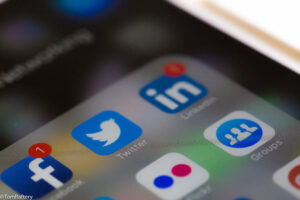
Should You Write a Resume With AI? A Recruiting Expert Weighs In
Generative AI has been available for little more than a year. However, it’s already redefining recruiting, as job-seekers race to find and land new career

Generative AI has been available for little more than a year. However, it’s already redefining recruiting, as job-seekers race to find and land new career

Recently, I was talking with a dear friend who was about to interview a candidate she had unknowingly placed in a professional reputation “box”. The

In less than 20 years, podcasting has revolutionized the way we consume and engage with informational content, offering a powerful digital platform for individuals to

Your employees are the core of your brand, but you wouldn’t know it looking at most companies’ websites and social media profiles. Instead, many companies

I’m going to keep this note short and to the point. However, it has been on my mind for a while. Here is why almost

Twitter is the third most popular social media site in the world and can play an important role in building your personal brand. By establishing
There’s still a lot of chat on the topic of personal branding. Particularly for people just entering the world of social media, there’s major pressure
There’s a lot written about building Personal Brands. A lot of the discussion about Personal Branding has to do with leveraging Social Channels in building
I’ve written a lot about the positive aspects of brand, brand humanization, allowing employees to be brand ambassadors, and to free up their personal brand
Have you come up with any worthy New Years’ resolutions yet? Are they already broken? If not, or if so, relax and stay positive. It’s
Your personal brand is supposed to boost your reputation. It’s also supposed to help you spread messages, build relationships and grow your business. It’s supposed
“The measure of a life is a measure of love and respect, So hard to earn so easily burned In the fullness of time, A
I’ve probably taken close to a dozen personality tests over the years. In just a few minutes, you get a trendy acronym or entertaining epithet
People are often surprised by what they hear that has been said behind their backs….! I emphasize as part of my Reputation Management theme, the
The TalentCulture #TChat Show is back live on Wednesday, January 21, 2015, from 7-8 pm ET (4-5 pm PT). The #TChat radio portion runs the first

The social era is creating a whole new level of opportunity for business and personal brands. Are you making the most of it?

Are you ready for the next step in your career? It may be time to take a step back and look more closely at what you can offer

In an age of digital exuberance, what can we do to avoid social overload? Tips to lower your stress while expanding your network

Does professional networking feel like a burden? Lighten the load by planning ahead for these 5 key social scenarios